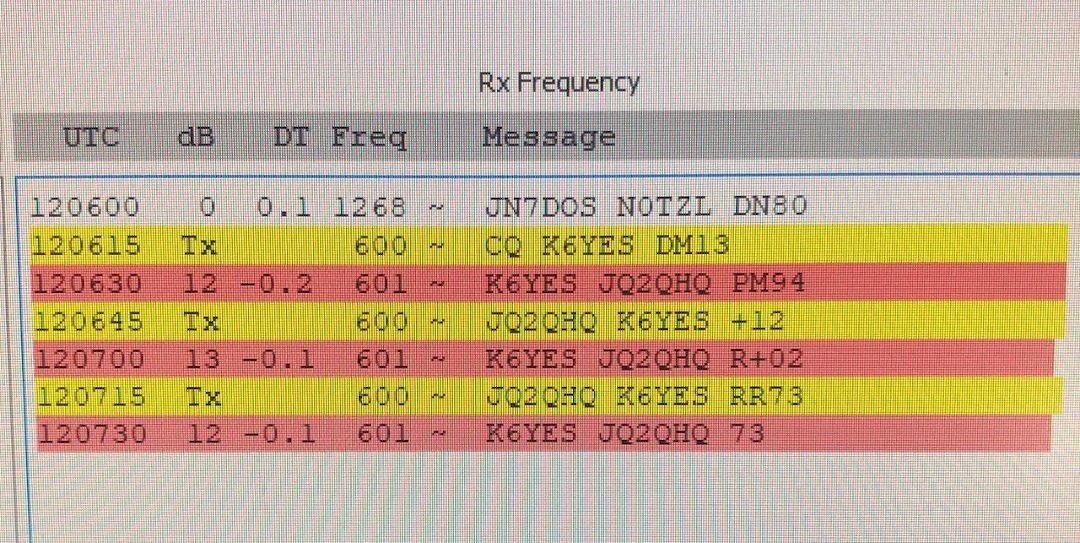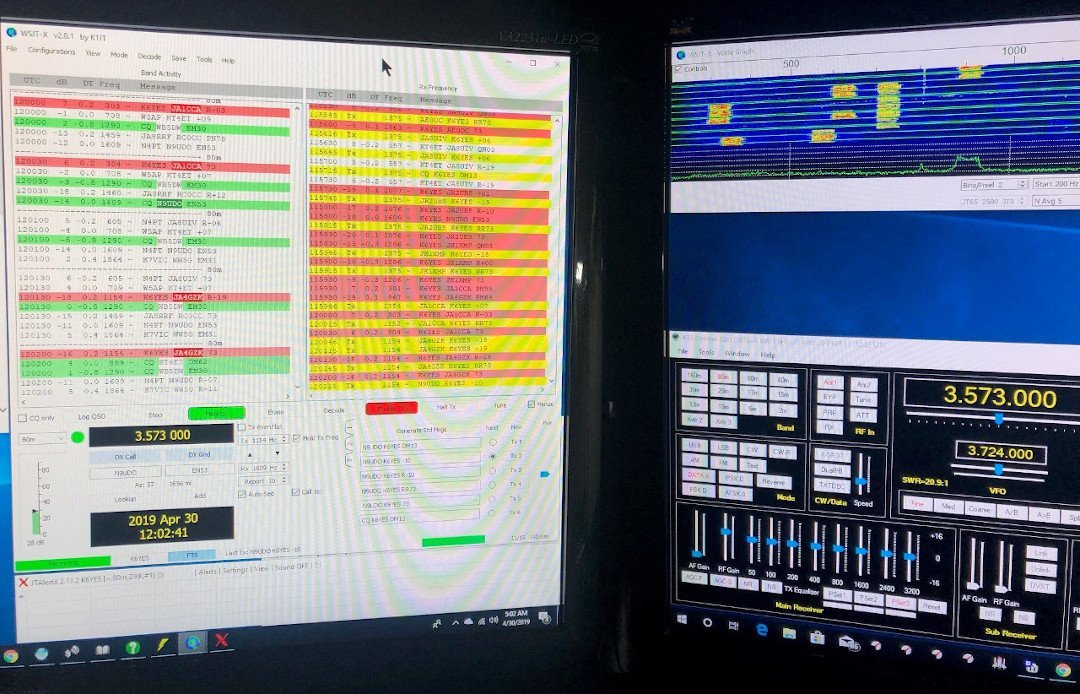In this post, we introduce the basics of the FT8 digital mode of communications for amateur radio. In simple terms, it is similar to how fax machines and modems communicate with each other. For the very young, you may need to ask an elder about fax machines and modems. I know, I know…how did we live back in those days with such slow and noisy machines…
In the FT8 digital mode, the text is converted into a series of chirping noises by a computer to be sent through the radio and heard by other radios around the world connected to computers that convert the noise back to the text to be displayed on the screen. Chirping and text conversion is handled by a software program. I use WSJT-X – it works great and is free, but there are others. The software can handle other types of digital modes – not just FT8. I think of digital modes as different birds with different chirping sounds, but FT8 chirps the fastest. I like fast – the faster the communication exchange, the more contacts around the world I can make. But this is a matter of preference.
So, you may ask: Why communicate like birds when we can talk? Well, we are practically at the bottom of the solar flare 11-year cycle. For simplicity, this means that communicating with amateur radio in 2019 is much harder than when at the top of the solar flare cycle. Enter computer and WSJT-X software, designed for weak-signal radio communications, with digital signal processing to hear what my ears can’t hear. I will be using the FT8 digital mode almost exclusively until a faster chirping-bird comes out or we get back to the top of the solar cycle (I hear some time between 2023 and 2026).
Completing contacts in FT8 is rather simple because the text exchange is set and handled by the program. There are options to change it but I never do. Below is what the full contact looked like this morning with Nobu (JQ2QHQ) in Japan. I’m yellow, Nobu is red. I call out for everyone and anybody to respond: CQ K6YES with my location grid. Nobu responds with his call sign and location grid. Signal reports and goodbyes (73s) are exchanged automatically – end of contact – less than 2 minutes total.
Above is a partial view of my computer screens with a variety of software used in amateur radio. Modern radios like the Elecraft K3S are designed to work with computers thus expanding the capabilities and improving operations in amateur radio.
73s, K6YES.



